Bloch MB 210 ‘At War’
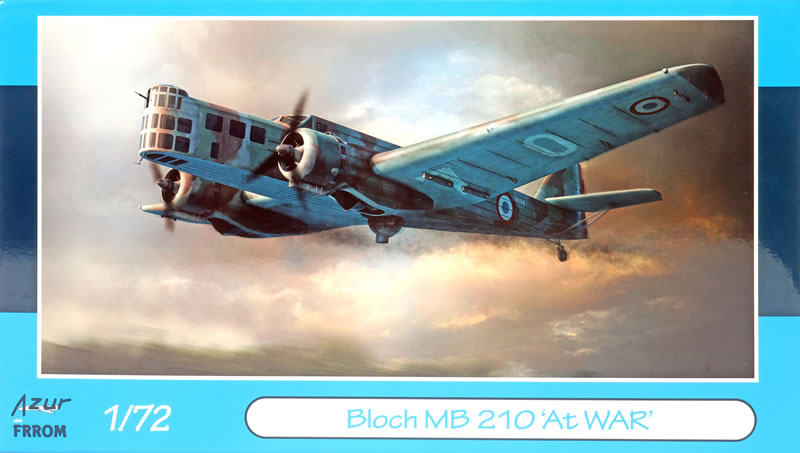
Azur FRROM, 1/72 scale
S u m m a r y : |
Catalogue Number: |
Azur FRROM Kit No. FR0056 - Bloch MB 210 ‘At War’ |
Scale: |
1/72 |
Contents & Media |
Details below. |
Price: |
£35.09 EU Price (£29.24 Export Price) plus shipping available online from Hannants |
Review Type: |
First Look. |
Advantages: |
Beautifully moulded parts, well-packaged, great instructions, nice variety of schemes and lovely decals. |
Disadvantages: |
None noted. |
Conclusions: |
If this is your era of interest then these lovely little kits will suit you down to the ground. Beautifully moulds with great instructions and a good choice of decals. grab one while you can. |
Reviewed by
Graham Carter

This the second iteration of this kit and is another of those mid-1930s French airplanes that only a mother would love, the Marcel Bloch 210 was a development of a floatplane design but fitted with retractable undercarriage. It bore a more-than passing resemblance to its predecessor, the MB200, which has been released by KP and Smer a couple of decades ago.
The four-man bomber was the most prolific bomber in the Armee de l’Air when WWII broke out but was seriously obsolescent and did not last long, although the invading Germans did second around 17 of them for training and communications.

The aircraft was predictably released by Heller (1967), and re-released by Smer in 1990. I have this kit and it shows its age and the simplicity of those early Heller moulds, but builds on Britmodeller and Marquette72 indicate that a pretty reasonable replica could be produced given sufficient time and skill. This is now no longer a chore as Azur Frrom has produced a technologically superior kit in all respects, relegating the older ones to the collector or plastic masochist's market. With only minor modifications from the original kit reviewed here on 29 January 2025 much of the following is pretty much a repeat.
Arriving in the usual strong top-opening affair with a rather atmospheric illustration on the top, inside is the familiar resealable clear bag containing five dark grey sprues, a clear one, a small photo-etched fret and a 16-page folded colour A5 instruction booklet.
A small 3D printed fin extension piece (used on one of the decal choices) is hidden among the sprues in its own zip-lock bag.
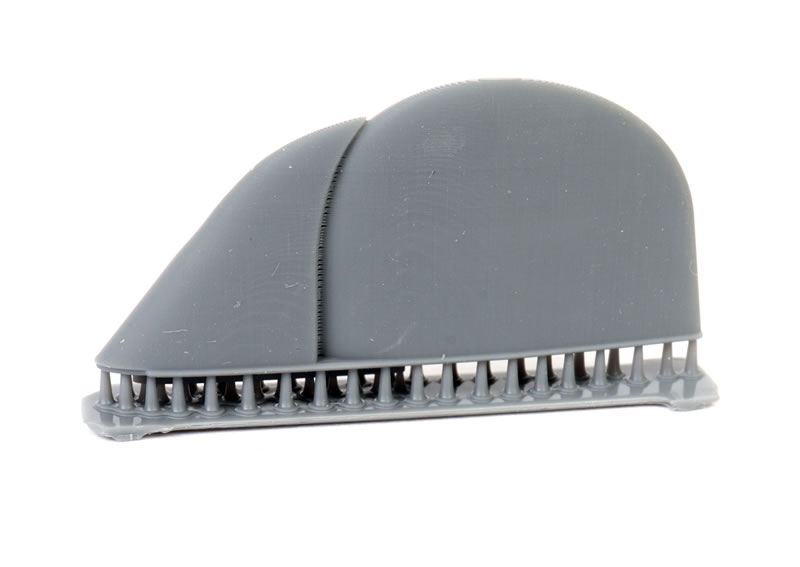
The parts are well-moulded with great surface detail, highlighting the metal strengthening bars(?) on the fuselage and wings, a feature of these 1930s French metal multi-engined aircraft.
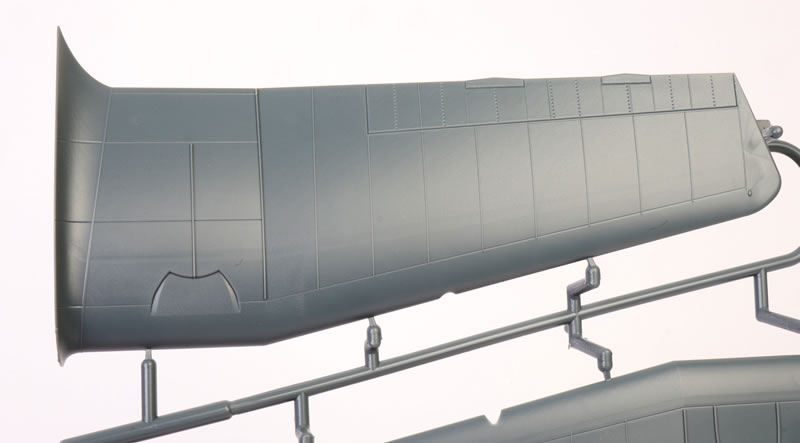
On the parts maps only six parts are indicated as not being required as they were part of the earlier variant.
The transparencies are clear and packed in their own bag to prevent scratching.
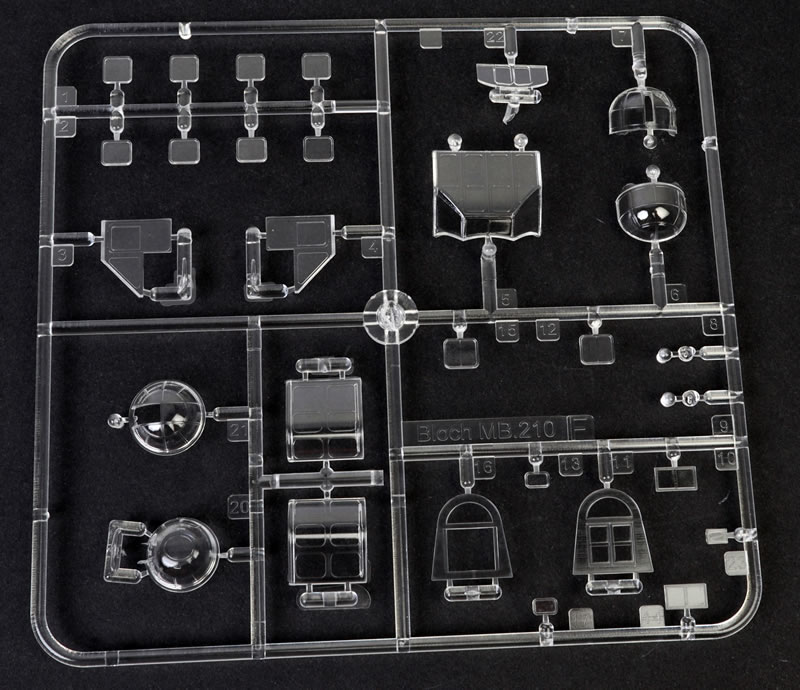
Gates are small and should be easy to clean up but take care with the ones on the wings as they do touch on the leading edges. None of the small surface swirls in the plastic evident in the earlier release are evident in this kit.
The interior and engine are fully detailed and will bear careful painting as the former can be seen through the extensive windows (or should I say fenestration) in the fuselage.
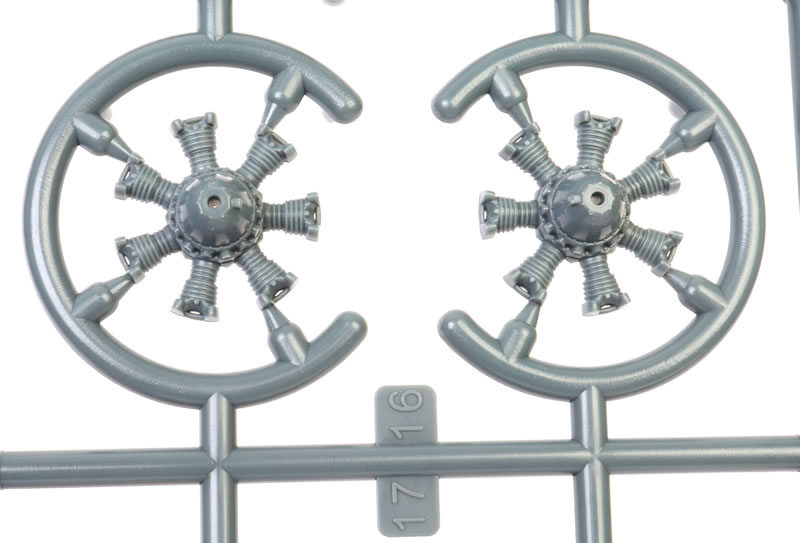
There will be some careful masking of windows as these are attached from the inside. The fuselage exterior structure is made up of six pieces to allow for the square shape to be accurately replicated. This will also require care as there are no locating pins/holes but there are narrow moulded ledges to help alignment.
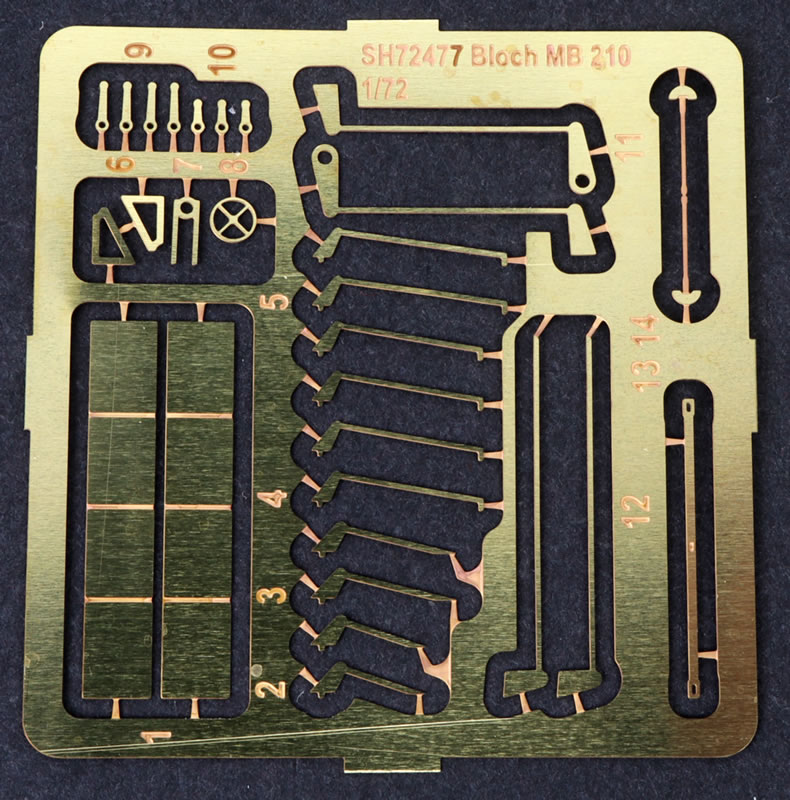
The instructions are in a 16-page A5 booklet and are clearly drawn, with colours called out in each step. Photo-etch is used for some very fine detailing of seat bases and exterior doo-dads.
Markings
Markings are provided for three aircraft, two in overall French dark green with aluminium forward nacelles and cowlings and one in the four-colour scheme that some of us find so attractive. One has typically colourful unit markings and all sport the large white matricules - serials - under the wings.
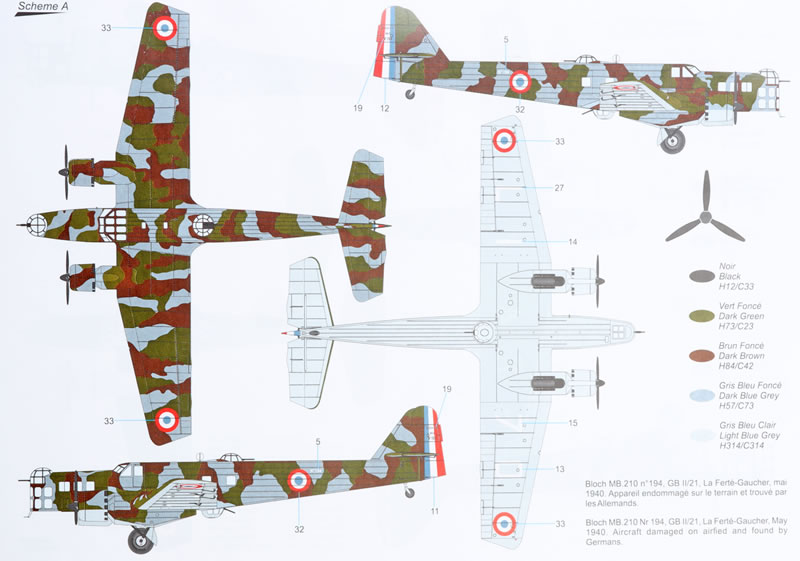
The decals are well-printed on a mid-blue backing sheet to assist in finding the many white markings. Colour density is excellent as is register, and carrier film is minimal. The unit badges are colourful and perfectly printed.
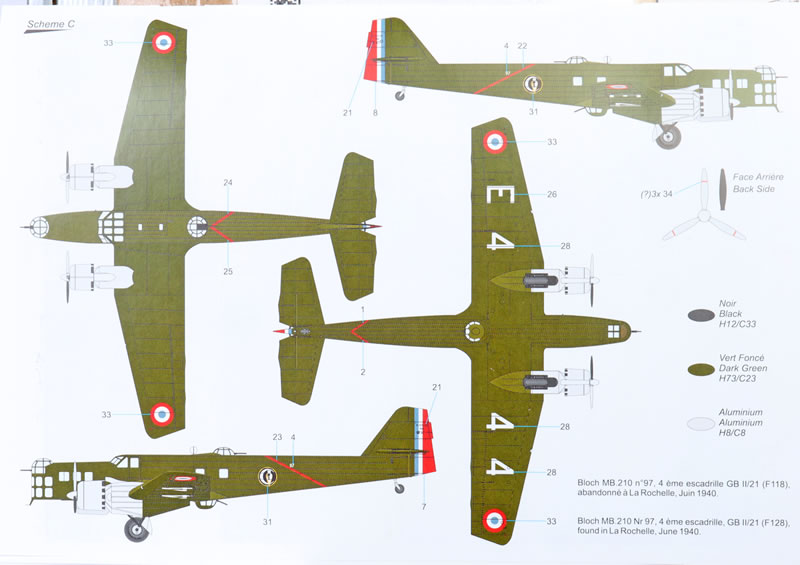
There are also some basic instrument faces for the cockpit. The three schemes are:
-
No. 194 of GBII/21 at la Ferte-Gaucher in May 1941 with the four colour camouflage scheme.
-
No. 104 ‘Lieut. Hardy’ at la Ferte-Gaucher in May 1941 in overall dark green with Aluminium cowling and nacelles. This one has an extended fin as provided in the 3D printed accessory.
-
No. 97 of 4 emergency escadrille of GBII/21 found at la Rochelle in June 1941 in overall dark green with Aluminium cowling and nacelles. This airframe has a red fuselage band and large squadron badge.
This is another wonderful kit from Azure-Frrom that fills a gap in the quirky French aircraft series. If this era and air force rocks your boat then this comes highly recommended.
Thanks to Azur FRROM for the review sample.
Review Text & Images Copyright © 2025 by Graham Carter
Page Created 28 May, 2025
Last updated
3 June, 2025
Back to HyperScale Main Page

|
